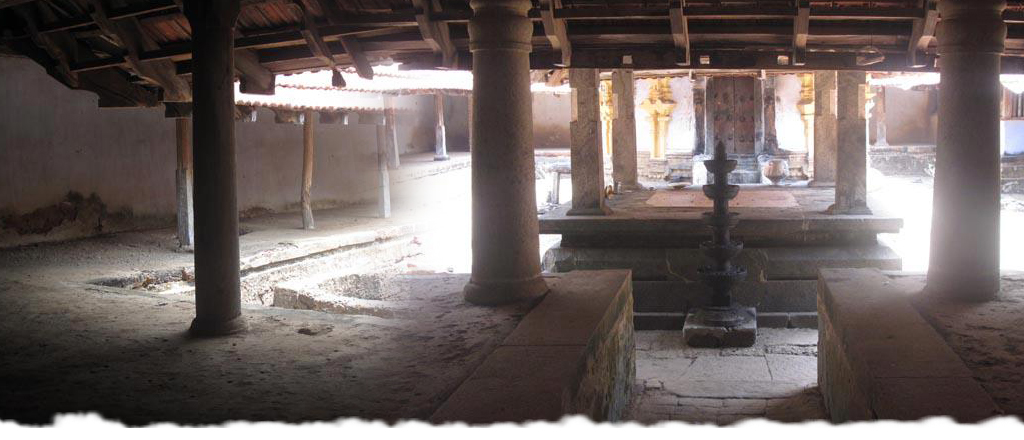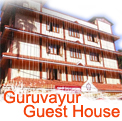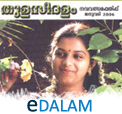PERSONALITIES || SHINING STARS || BOOKS || BLOGS || E DALAM || YUVACHAITHANYAM || GUESTHOUSE RESERVATION |

No authoritative data is available about the origin of Pisharody community. A mixture of historical facts, fiction and legends is in circulation about the community.
PISHARODIES & SWAMIYARS
In the elite Namboodiri Brahmin families in Kerala, who had the right to study vedas and perform yagas such as somayaga and athirathram and where the male members devoted their whole life time in studying vedas, only the eldest son was permitted to marry. Some times they may take two or more wives. Some of these vedic scholars used to take to sanyas (ascetic life) later in their life, even if they had wives and children. Those who become sanyasis go to the swamiyar madhoms (priestly houses) and spend the rest of their lives there. They are not supposed to see their wives and children after they adopt sanyasa. The wives and children are also not allowed to see their husbands who become sanyasis.Before one is accepted as sanyasi, one has to perform many vedic rituals. After these are finished, the man has to immerse himself in the river, pull out two strands from the sheaf of hair on the head (kudumma), remove the sacred thread (poonool) worn on the body and come out of the water naked. There upon, another Brahmin should receive him with saffron cloth and dandu (stick) and give him alms (bhiksha). Sanyasis are supposed to live on alms begged from others.
There may be two or more sanyasis in a Swamiyar madam. The elderly swamiyars (sanyasi’s) are called Sree Gurukkal (revered teacher). The Sree Gurukkal used to call the younger swamiyars, shara or pishara’s. Pisharadi may be formed from the shara stem by adding adi, the word for reverence. (Adi in Malayalam means foot or and thiruvadi is the equivalent of sree padam in Sanskrit, meaning great or revered feet like that of a god. Other community names like Nambidi, Vellodi, Nedungadi etc. also take the suffix adi like this).
It is believed that the Pisharadees of today are the descendants of the Pishara’s of the old days. The close similarities between the funeral rites of Pisharadees and Swamiyar’s point to this possibility. The body of the deceased is placed eastward in a seating posture in a pit of two_and_a_half kol (kol is an old length_ measure) by one_and_a_half kol and is filled with salt.
'PISHARA'ODI
There is also a story that the pishara got corrupted and were called pishara_odi (pishara who deserted Sanyasa). There is an interesting story about this. Once upon a time, a Namboodiri decided to become sanyasi. When the rituals to be performed for transformation to sanyasi life reached the stage of pulling out of hair strand from his head, he could no longer bear the ordeal and refusing to pull out his hair he went back. Thus the Namboodiri who retreated without pulling_out (pizhathe) hair came to be called pizhathe_odi and later pishara_odi. The same story is told in many places with slight regional variations. In northern Kerala, the term Pisharodikal is used, whereas in southern parts it is Pisharadikal.'VISHAHARA ' ADIKAL
It is also said that the vishahari adiikal from Tamil Nadu could be the predecessors of Pisharadees. They were visha (poison) hari’s (curers). The vishahari adi may have got corrupted to visharadi and then to pisharadi.PISHARAKAN
The word "Pisharody" can be derived from 'Pisharakan' means 'Ambalavasi', a person related with temple and temple related jobs (Kazhakam). The house of a Pisharody is known as 'Pisharam' or 'sharam'.KAZHAKAM
Pisharadees are related with temple and temple related jobs (Kazhakam). Kazhakam is classified in to 3 groups. "Malakettu Kazhakam, Vilakkeduppu Kazhakam and Adichuthali Kazhakam. Most of the pisharams are located near temples.
 |
 |
 |
 |
 |
 |